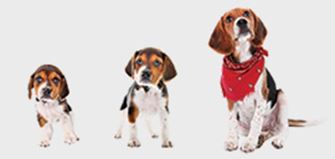Breed Spotlight: the Shiba Inu
Like the Akita, the Shiba Inu is a Japanese heritage breed that has existed throughout the mountainous seaside areas of Japan for over 3,000 years. The Japanese word inu means “dog,” and, in the old Nagano dialect, the word shiba means “small.” Therefore, when translated, the Shiba Inu’s name means “small dog,” which is fitting because the Shiba is the smallest of the Japanese Spitz dogs, which were once all one type. This group also included the Japanese Akita and the Hokkaido dog. The Shibas were primarily used for hunting small game such as birds. However, during the mid-19th to early 20th centuries, setters and pointers from England quickly began to replace the native Shiba, and in some instances they were crossed with the Shiba. Soon, the numbers of the native Shiba began to dwindle, and at one point the dogs were nearly impossible to find. In 1928, some enthusiasts came together to preserve the Japanese heritage breed by collecting pure strains that were found throughout Japan. In 1934, the breed standard for the Shiba Inu breed was set and implemented, and, by 1937, the breed was officially declared a national monument breed.
The breed faced yet another hurdle during World War II when the revival efforts were abandoned and Japan fell out of favor with many nations. Many non-military dogs were culled, and their coats were used to clothe the Japanese military. Another devastating blow came in 1952 when a distemper outbreak devastated the island of Japan, diminishing the numbers even further. However, once the war and disease were behind the breed, enthusiasts again picked up the pieces and began rebuilding their breeding programs. From that point, enthusiasts from all over the world have worked together to produce Shibas that are healthy and true to type.
Want to learn more about the Shiba Inu? Click here for the full breed standard.

















